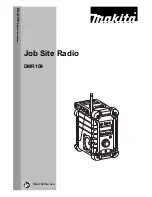
4.10.2
Telephone Line Surge Protection
Line 1 Ring
Line 1 Tip
Earth Ground
Line 2 Ring
Line 2 Tip
Figure 31: Primary Telephone Line Transient Protection
The most common entry point for lightning induced power surges is the phone line
coming from the telephone company. These lines often travel above ground for many
miles and are subject to lightning strikes along their entire length. The CPE should also
have primary lightning protection installed at both ends of the line if the wiring travels
outside or between buildings. It is critical to always install primary protection at the
customer end of the wiring to prevent possible electrocution of the customer when
lightning strikes near the equipment. It is also important to note that the secondary
protection on the CPE is active protection and only works when the CPE is powered up.
If the CPE is ever left un-powered, the phone, antenna and power lines should all be
disconnected to protect the circuitry in the CPE.
Carlson Wireless recommends using telephone line surge protectors for all active phone
lines and leased lines. The telephone line surge protector is designed to be used as a
primary station protector at both the base and the subscriber ends of a system and
works with the secondary on-board lightning protection. Its plastic enclosure is weather
and fire resistant and the surge protector provides protection against lightning surges,
power/telephone line cross conditions and ground potential surges. Plated #10 brass
studs, washers and hex nuts provide the connection to the two phone lines. There is
also a sectionalized grommet for wire entry. See figure 12 for details on connecting the
phone lines.
Trailblazer Installation and User Manual
36
















































